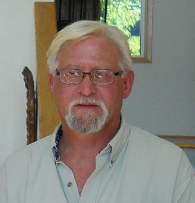While it certainly varies significantly by individuals, the average number of homes that people purchase during their lifetime averages around six. Some people plan their real estate future and others just go with the flow. Financially, you'll be better of planning your real estate future.
There are two key areas you want to look at when planning your real estate future. One is the equity growth in your investment and the other is renovation and improvements to your current residence. Of course, there are other considerations such as family needs and income growth that allows you to afford a larger home. But those and other considerations are really a subset of the two major contemplations.
Coupling the closing costs for a home with the high interest payments over the first five to six years results in low growth of your equity via making the mortgage payments. Of course, if you made a savvy purchase just before market prices increased significantly, your equity will grow faster. However, the smart way to invest in your personal residence is assuming that your equity will be built mostly from your monthly mortgage payments.
For instance, if you took out a $150,000 mortgage today, your first payment (without insurance or property tax) would be $760.03. Of that, $562.50 goes to paying the 4.5% interest on the loan. Only $197.53 goes into building your equity. If you paid $3,000 in closing costs, it takes 15 mortgage payments to build enough equity to cover the closing costs. That means it's about 1 1/4 years before you are really earning any equity in your home. If you were planning to move up to a better home in two or three years, you won't have much equity in your current home.
After making mortgage payments on that $150,000 loan for two years, you will have $5,167 in equity but after subtracting out the $3,000 in closing costs your true equity is only $2,167. After six years, you have paid $16,811 off on the loan and have $13,811 in real equity after accounting for the closing costs. But it's at about the six-year point when the interest and principle payment rates start to work in your favor. It won't be until the 15 year point in the loan (mid point of a 30-year mortgage) that you actually start paying more towards the principle than in interest. However, by year 10, you'll have built up $27,486 in true equity. The point being, when planning your real estate future, you should stay in the same house for more than six years to build up some reasonable equity.
This is a short and easy point to get across but many people fail to carry through on this important real estate investment strategy. With the point being made about when equity growth actually happens, it's important to understand the best time to make improvements to your home. Most people wait until shortly before they sell the home to make improvements to increase the selling price.
The fact is that most improvements made just before selling barely break even and many actually cost the homeowner more for the improvement than he or she realizes in the selling price. It's a much better strategy to make the improvements long before you plan to sell. The benefits are two fold. First and foremost, if you make the improvements after living in the house for two years and then sell after ten years, you enjoy the benefit of the upgrades for all of those years. Additionally, making those upgrades increases your enjoyment of the property and therefore you are likely to stay in it longer to build more equity before moving up to a better property.
I strongly suggest you consider equity growth and property improvements when planning your real estate future.
Please leave a comment if this article was helpful or if you have a question.
 Author bio: Brian Kline has been investing in real estate for more than 30 years and writing about real estate investing for seven years. He also draws upon 25 plus years of business experience including 12 years as a manager at Boeing Aircraft Company. Brian currently lives at Lake Cushman, Washington. A vacation destination, a few short miles from a national forest in the Olympic Mountains with the Pacific Ocean a couple of miles in the opposite direction.
Author bio: Brian Kline has been investing in real estate for more than 30 years and writing about real estate investing for seven years. He also draws upon 25 plus years of business experience including 12 years as a manager at Boeing Aircraft Company. Brian currently lives at Lake Cushman, Washington. A vacation destination, a few short miles from a national forest in the Olympic Mountains with the Pacific Ocean a couple of miles in the opposite direction.